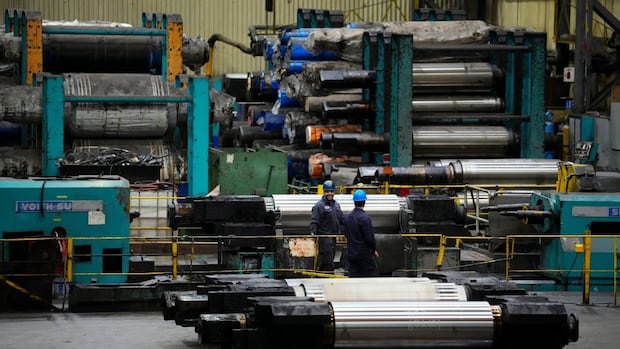
"Ontario's economy has recently started to feel the impact of American tariffs, shedding 38,000 jobs in the second quarter of 2025, the province's financial watchdog said Thursday in a report. Financial accountability officer Jeffrey Novak said hits to employment in that timeframe include the early impacts of the tariffs, as well as broad economic factors. "The latest economic indicators suggest mostly negative results for Ontario's economy in 2025 Q2, with losses in employment, manufacturing sales, wholesale and retail trade, and international exports," Novak wrote."
"Most of the losses were felt in the manufacturing sector, which was down 29,400 jobs. That drop of 3.5 per cent was the sharpest quarterly job loss in the sector since 2009, except for the COVID-19 pandemic. "After a strong 3.1 per cent gain in 2025 Q1, manufacturing employment fell by -3.5 per cent in 2025 Q2 as newly imposed U.S. tariffs on exports began to weigh on the sector," Novak wrote. The loss of 56,600 full-time jobs was partly offset by 18,700 added part-time jobs."
"The unemployment rate rose for a ninth consecutive quarter, up to 7.8 per cent the highest rate since late 2012, excluding the pandemic. WATCH | Report shows how U.S. tariffs could impact Ontario jobs: A new report from Ontario's Financial Accountability Office shows the potential impact of Donald Trump's tariffs on the province, including possible unemployment and affordability. Novak said the effects of tariffs are being particularly felt in Windsor, which has a large manufacturing base, and its unemployment rate rose 1.9 percentage points in the second quarter to 11.2 per cent, the highest in the province. Liberal finance critic Stephanie Bowman said in a statement that the FAO report shows the government is steering the province in the wrong direction. "Never has a government spent so much to deliver so little," she wrote. "Working families are struggling, we are building housing at the slowe"
Ontario lost 38,000 jobs in the second quarter of 2025, reflecting early effects of U.S. tariffs and wider economic weakness. Manufacturing experienced the largest losses, shedding 29,400 jobs, a 3.5% decline and the steepest quarterly drop since 2009 excluding the pandemic. Full-time employment fell by 56,600 positions, partially offset by an increase of 18,700 part-time jobs. Unemployment rose for a ninth consecutive quarter to 7.8%, the highest level since late 2012 outside the pandemic. Windsor saw particularly acute effects, with unemployment rising 1.9 percentage points to 11.2%. Political criticism cited high spending and slow housing progress.
Read at www.cbc.ca
Unable to calculate read time
Collection
[
|
...
]